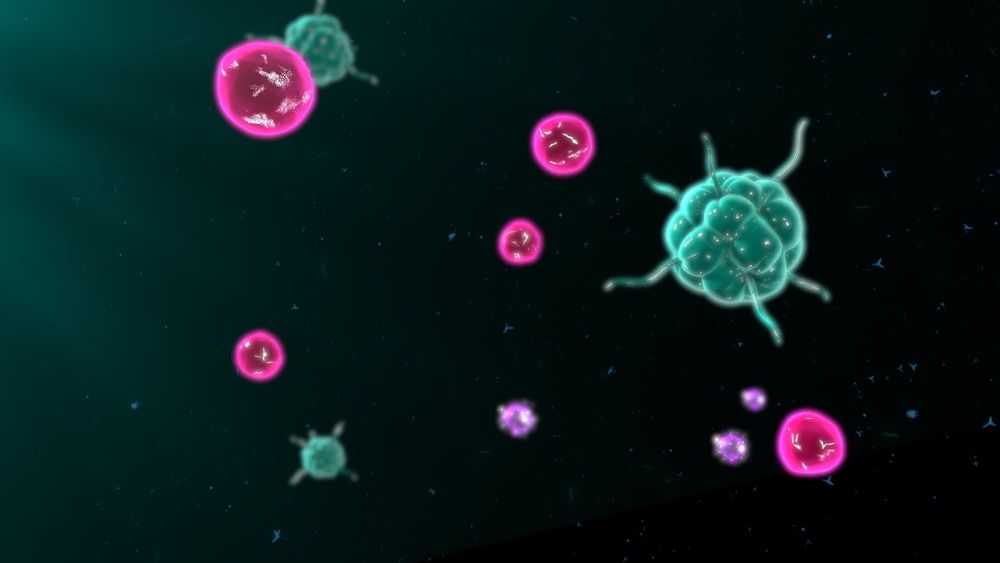Certain Immune Cells May Be Biomarker for MG Severity
Written by |

Blood levels of certain immune cells, called follicular helper T-cells (Tfh), are abnormally high in patients with myasthenia gravis (MG) who have autoantibodies against the acetylcholine receptor, a study shows.
Study results showed that cells released inflammatory molecules and were linked with more severe disease, supporting their role as a potential biomarker for assessing disease severity and therapeutic effectiveness.
The study, “Immune Skew of Circulating Follicular Helper T Cells Associates With Myasthenia Gravis Severity,” was published in the journal Neurology: Neuroimmunology & Neuroinflammation.
MG affects the neuromuscular junctions, the connection between nerves and muscle, causing muscle weakness and fatigue. About 80% of MG patients develop antibodies against the acetylcholine receptor (AChR), found in the neuromuscular junctions.
B-cells, or plasmablasts, are the cells responsible for the production of antibodies. This production is stimulated by a protein — inducible T-cell costimulator (ICOS) — found in Tfh cells. These cells are then divided in different subtypes, called Tfh1, Tfh2, and Tfh17. The last two subtypes are known to strongly promote antibody production.
Here, a group of researchers in Japan investigated whether Tfh cells found in circulation (cTfh) play a role in the progression of MG.
In total, they analyzed blood samples from 24 MG patients (mean age 51.8 years), all positive for anti-AChR antibodies, who had never received immunotherapy. Eighteen age-matched healthy individuals were included in the study and served as controls.
The analysis showed the frequency of Tfh cells in circulation was significantly higher in MG patients compared to healthy participants — 9% vs. 5.8%.
In addition, the researchers also found significantly more blood cells with high levels of ICOS in MG patients (4%) compared to healthy participants (0.9%). Within the circulating Tfh cells, MG patients showed more cells with high levels of ICOS than the controls (39.2% vs. 11.6%).
Within a subset of immune T-cells producing the CD4 surface marker, the frequency of two subtypes of cTfh cells, the cTfh2 and cTfh17, was significantly higher in MG patients vs. the controls: for cTfh2, MG patients had 5.7% compared to 4.2% in controls; cTfh17 cells were seen in 0.73% of patients compared to 0.21% of controls.
Also, the frequency of the Th17 subset within cTfh cells was more elevated in MG (8.1%) than healthy individuals (3.2%).
Next, the scientists observed that cTfh from MG patients released higher levels of certain cytokines (molecules that mediate and regulate immune and inflammatory response) relative to the controls. Specifically, this was seen in the cytokines interleukin (IL)-4, IL-17A, and IL-21.
Notably, a higher frequency of cTfh cells correlated with greater disease severity, as assessed with the Quantitative MG (QMG) score.
The frequency of cTfh cells was higher in patients with early-onset disease (10.8%) than patients with late-onset MG (7.3%). cTfh2 cells also showed a significant correlation with the QMG score.
Levels of anti-AchR antibodies had no correlation with the frequency of plasmablasts or QMG score. Also, no correlation was found between the frequency of cTfh and the presence or absence of thymomas, which are tumors of the thymus.
Among MG patients, six eventually were treated with immunotherapy. In this subgroup, the levels of cTfh cells with high ICOS were significantly decreased after treatment, with patients showing improvements in the QMG score (meaning less severity).
Overall, these findings suggest that alterations in the activation and subsets of cTfh cells “is a key feature in the development of MG and may become a biomarker for disease severity and therapeutic efficacy,” the scientists concluded.






Leave a comment
Fill in the required fields to post. Your email address will not be published.